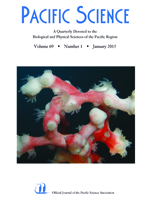The islands of remote Polynesia contain ant faunas that have been largely introduced anthropogenically. I employed nonmetric multidimensional scaling ordination analyses to evaluate patterns of ant species assembly on 42 islands across remote Polynesia. Patterns on islands in the Hawaiian archipelago were distinctly separate from those of more southerly islands. Patterns on high islands were distinctly separate from those of atolls and low-lying islands. Patterns on small islets on the barrier reefs of high islands were more similar to those of distant atolls than those of the nearby high islands. Latitude and elevation were most strongly correlated with ordination axes; area and longitude were weakly correlated with ordination axes. Patterns are consistent with human-assisted dispersal through long-distance shipping as a primary vector of colonization, and with a greater diversity of habitat types with increasing island elevation. Similar results were obtained when a subset of 19 islands that had been more thoroughly surveyed was analyzed. I also examined patterns in species composition among communities (within islands) on three French Polynesian islands (Bora Bora, Huahine, and Moorea). On all three islands, sites grouped together distinctly in ordination space as a function of the dominant ant species. A substantial number of species pairs co-occurred less frequently than predicted by chance. Although interspecific competition appears to be important in structuring ant communities within islands, habitat affinities probably also play a role.
How to translate text using browser tools
1 February 2015
Species Assembly Patterns in Polynesian Ants
Lloyd W. Morrison
ACCESS THE FULL ARTICLE

Pacific Science
Vol. 69 • No. 1
January 2015
Vol. 69 • No. 1
January 2015




